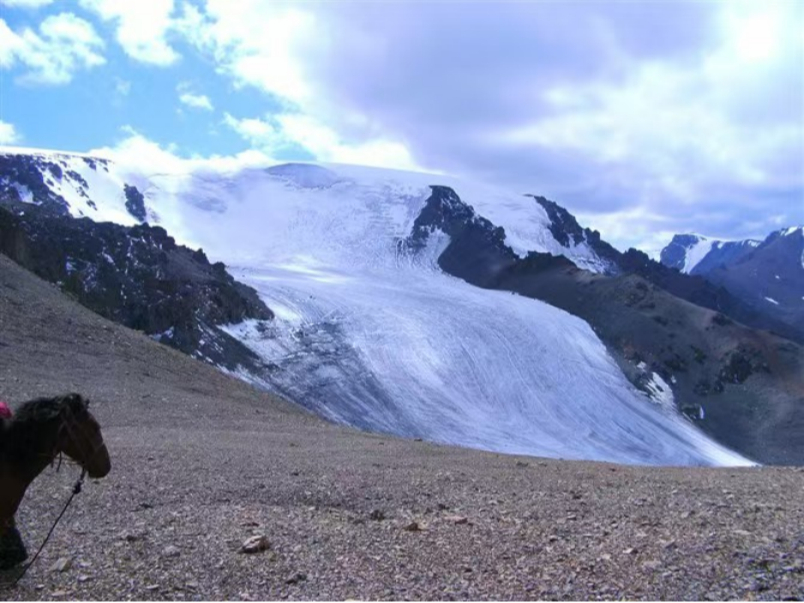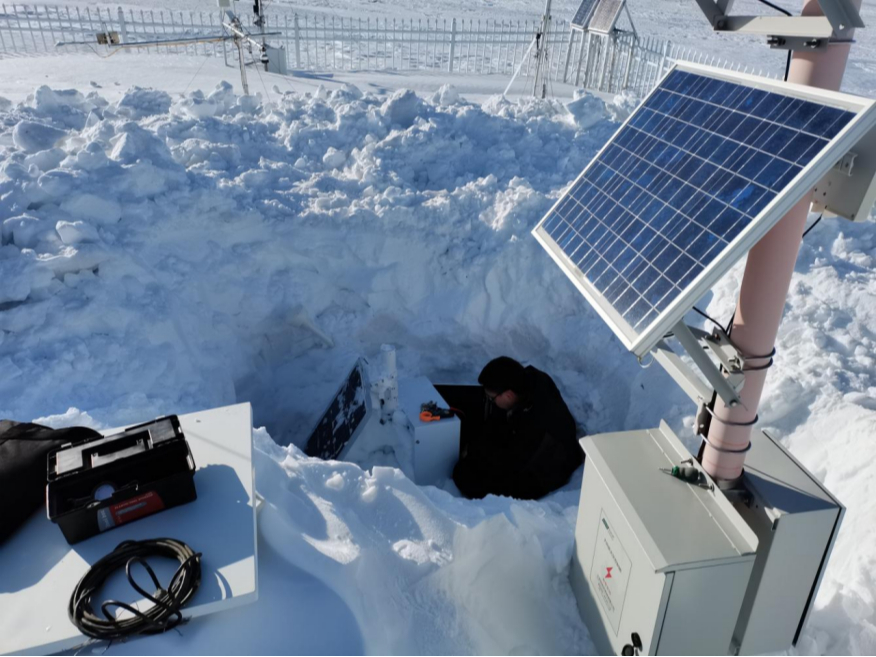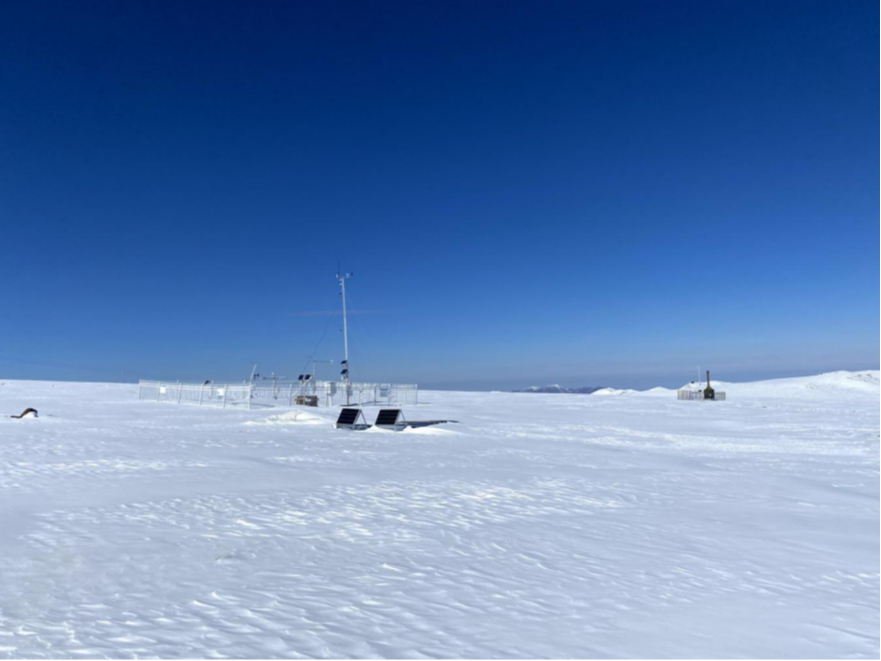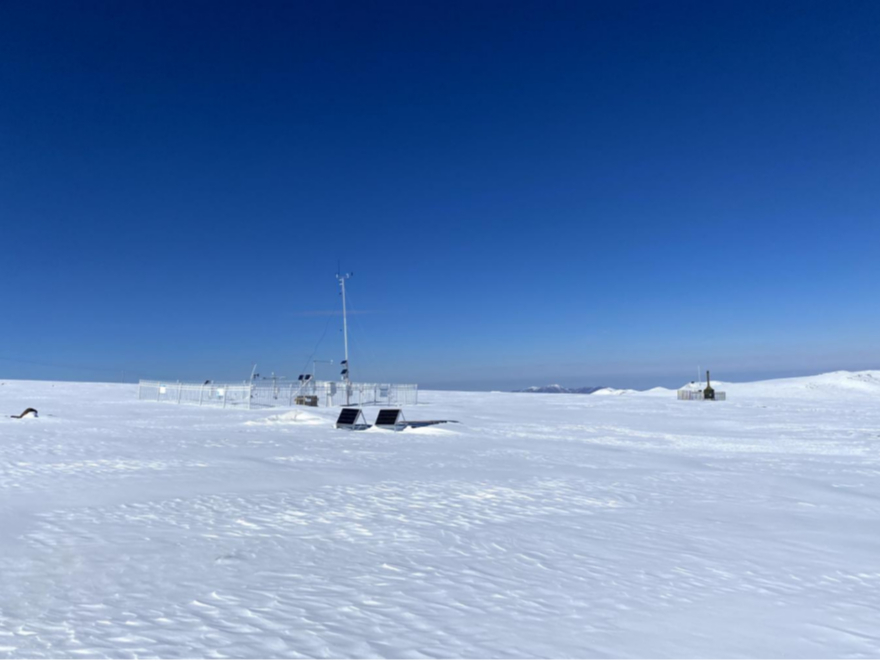Jimunai County: Exploring the Road to Protect Glacier
Jimunai County, where the first gate in the northwest is located, is located in the northwest of Xinjiang Uygur Autonomous Region, on the northern edge of the Junggar Basin, on the northern foot of Sawuer Mountain, and on the south bank of the Ertix River. The Sawuer Mountain Glacier is the highest peak of Sawuer Mountain. It is the water source of Jimunai County and a grassland pasture. At the same time, it is rich in wild animal and plant resources and is a rare treasure house of natural material resources.
The Sawuer Mountain Glacier has given the people of Jimunai County a gift for survival. They rely on and protect the glacier.
Subtraction to avoid human destruction
The Sawuer Mountain Glacier has provided a guarantee for the survival and survival of people of all ethnic groups in Jimunai County for generations. However, glaciers are very sensitive to climate change. In recent years, with the warming of the climate, the accelerated melting of glaciers has caused people's concerns. In order to protect the water resources of the Sawuer Mountain Glacier in Jimunai County and the surrounding ecological environment, and promote the sustainable development of ecology and social economy, the Jimunai County Government, in conjunction with the Northwest Institute of Ecological, Environmental Resources, Chinese Academy of Sciences, the Altai Mountain cryosphere Science and Sustainable Development Researchers at the Comprehensive Observation and Research Station have designated the Sawuer Mountain Glacier Water Resources Reserve in Jimunai County.

(Sawuer Mountain Glacier. Photo provided by interviewees)
"We have stopped all tourism projects in the Sawuer Mountain Glacier and permanently closed the mountain for protection. We have banned all activities unrelated to environmental protection in the Sawuer Mountain Glacier area, and implemented a glacier grazing ban of 40,000 acres." Yang Haijun, member of the Standing Committee of the Jimunai County Party Committee and deputy county magistrate of the government, said.
Sawuer Mountain has abundant rainfall, lush forests, and green pasture. It is one of the summer pastures in the Altay Prefecture. At the same time, the valley is flat, has temperature inversion in winter, and the temperature is high. It is an excellent winter pasture in Altay Prefecture. There are no long-term indigenous people in the Sawuer Mountain Glacier Reserve, but there are herdsmen who graze seasonally. Zhang Peng, Party Secretary of the Forestry and Grassland Bureau of Jimunai County, said: "In order to safely handle glacier protection, indigenous people's lives and economic development, in accordance with the" Notice of the Ministry of Natural Resources, Ministry of Ecology and Environment, and the National Forestry and Grassland Administration on Strengthening the Management of Ecological Protection Red Lines (Trial)", on the basis of balance between grass and livestock, indigenous people continue to live. For economic development facilities that need to be built, land requisition and occupation procedures should be handled in accordance with wetland occupation requirements without affecting the wetland environment."
Do science and explore the mysteries of glaciers
In the periglacial zone of the Sawuer Mountain Glacier, melted ice water forms a wetland, where Xinjiang's Jimunai Alpine Periglacial Zone National Wetland Park is located. Jimunai Alpine Ice Margin National Wetland Park has unique natural conditions. The ice and snow meltwater river wetlands in the wetland park are basically in a natural state, with complete ecosystems and outstanding natural characteristics, and have important protection and scientific research value. At the same time, periglacial wetlands have important ecological functions such as regulating runoff, protecting frozen soil, maintaining water and soil, and maintaining glacier microclimate, and play an important role in maintaining regional ecological stability and ecological security.
Zhao Yanchao, Party Secretary of the Jimunai County Branch of the Ecological Environment Bureau of the Altay Prefecture, said: "The rapid melting of glaciers is the biggest hidden danger to ecological balance. If the melting of glaciers intensifies, it will exhaust stored cold energy, cause the glaciers themselves to collapse or disappear, completely lose their function of regulating climate, endanger the security of water resources, and seriously deteriorate the regional environment." At the same time, Jimunai Alpine Glacial Zone National Wetland Park is located on an important channel for migratory birds in western my country. It is a stopping place and breeding ground for many migratory migratory birds such as black storks, swans, and wart-nosed swans. The natural conditions in the periglacial area are harsh and the ecosystem is relatively fragile. The periglacial area wetlands have become the most important biological habitat, shelter and species gene bank in the periglacial area.
In order to better protect glaciers, Jimunai County and a number of research institutions have carried out scientific research on glaciers. "Their research mainly focuses on three major research directions: cryosphere processes and mechanisms, interactions between cryosphere and other layers, and cryosphere and sustainable development." Fu Zhiwei, deputy director of the Autonomous Region Ecological Environment Monitoring Station, introduced. Through a series of glaciological survey methods including glacier mass balance, foundation three-dimensional laser scanning, glacier radar thickness measurement, glacier end changes, ice surface meteorology, glacier runoff and ice and snow chemistry, Jimunai County has ascertained the status and future changes of the Sawuer Mountain Glacier. The Musi Island Glacier in Jimunai County, China is the largest glacier in Saur Mountain, and the Rast River Glacier No. 3 is the second largest glacier in Saur Mountain in China. These two glaciers are the key monitoring glaciers in Saur Mountain of the Northwest Institute of Ecological Environment Resources, Chinese Academy of Sciences. The Altai Mountain Cryosphere Science and Sustainable Development Comprehensive Observation and Research Station. Over the years, the Altai Mountains Cryosphere Science and Sustainable Development Comprehensive Observation and Research Station of the Northwest Institute of Ecology, Environmental Resources, Chinese Academy of Sciences has carried out continuous glacier mass balance, glacier end changes, glacier albedo and ground-based three-dimensional lidar scans. "Generally speaking, the distribution of glaciers in Mount Sawuer has the following three significant characteristics: small glacier area, relatively concentrated high-latitude and low-altitude glaciers and geographical distribution; rapid melting of glaciers in Mount Sawuer; and glacier division, area reduction and terminal retreat. Continue to increase." Researcher Wang Puyu, director of the Altai Mountains Cryosphere Science and Sustainable Development Comprehensive Observation and Research Station of the Chinese Academy of Sciences, said.

(Scientific researchers conduct glacier research. Photo provided by interviewees)
Jimunai County has also joined forces with the Xinjiang Institute of Ecology and Geography of the Chinese Academy of Sciences to conduct a special survey on the background of wild plant resources in Jimunai Alpine Glacial Zone National Wetland Park. Jimunai Alpine Glacial Zone National Wetland Park has 3 species included in the IUCN Red List of Species (2010), of which 2 species are at the Near Danger (NT) level, each of which is ion mustard (Chorispora greigii), Altai buttercup (Ranunculus altaicus); there is one species belonging to the endangered (EN) level, Salixvestia.
Add up and explore new ways to protect glaciers
How can we slow down glacier melting? With the help of scientific research, Jimunai County has made many attempts.

(Jimunai County carries out an artificial rain donation experiment. Photo provided by interviewees)
Affected by the westerly circulation and polar cold air masses, the Altay Prefecture has abundant precipitation throughout the year and is evenly distributed throughout the year. However, since 1959, the glaciers in the Altay Prefecture have receded significantly, and material losses have continued, showing an accelerating trend. In order to assess the impact of precipitation on glacier ablation, Jimunai County conducted an artificial water-increasing experiment in the Musi Island Glacier Area of Sawuer Mountain. The impact of water addition on glacier ablation was assessed by observing the form and precipitation of artificial water addition, as well as the surface albedo and material balance changes of glaciers before and after water addition. "Artificial water addition has slowed down the melting of glaciers to a certain extent. However, the mechanism by which artificial water addition affects glacier ablation is very complex. In addition to having a direct impact on the accumulation of material in the glacier, it also affects the energy exchange process between the glacier and the atmosphere, which is related to the form, intensity and amount of precipitation." said Wang Tong, deputy director of the Meteorological Bureau of Jimunai County.
In addition to artificial water enhancement, Jimunai County has won central financial support to implement a human-assisted degraded wetland restoration project in the Kekesayi Wetland Conservation Community area of the Conservation and Restoration Zone in Jimunai Alpine Ice Margin National Wetland Park. Among them, 2500 acres of wetlands are restored and 1900 acres of water are replenished. These measures can effectively improve the underlying surface conditions of the glacier area and improve the regional ecological environment. Heilan Muhari, director of the Jimunai County Branch of the Ecological Environment Bureau of the Altay Prefecture, said: "Overall, the melting of glaciers is closely related to climate change. With global temperature rising, the most effective measure to slow down glaciers is comprehensive energy conservation and emission reduction, use clean energy, and reduce carbon emissions."

(Jimunai County implements artificial precipitation enhancement experiments.)
The Third Plenary Session of the 20th Central Committee of the Communist Party of China put forward new requirements for the construction of the national nature reserve system. Faced with new tasks, Jimunai County also has new plans for glacier protection. Token Abdukrimu, deputy secretary of the Jimunai County Party Committee and county magistrate, said: "We plan to include the Musi Island Glacier in Jimunai County into the overall plan and expand the area from the current 49.65 square kilometers to 288.53 square kilometers, including all glaciers and surrounding areas. Carry out wetland publicity, monitoring and investigation in the expanded wetland park, carry out restoration of severely degraded wetlands, promote mountain closures on the shady slopes of Sawuer Mountain for afforestation, and promote the growth of coniferous forest plants. Strengthen exchanges and cooperation with the Altai Mountains Cryosphere Science and Sustainable Development Comprehensive Observation and Research Station of the Northwest Institute of Ecology, Environment and Resources, Chinese Academy of Sciences, pay more attention to the impact of glacier changes on regional hydrology and water resources, as well as ecological and environmental effects and countermeasures, and actively build a long-term mechanism for relevant departments such as forestry and grass, scientific research, and hydrology to solve scientific and technological needs, data sharing and collaborative research."







